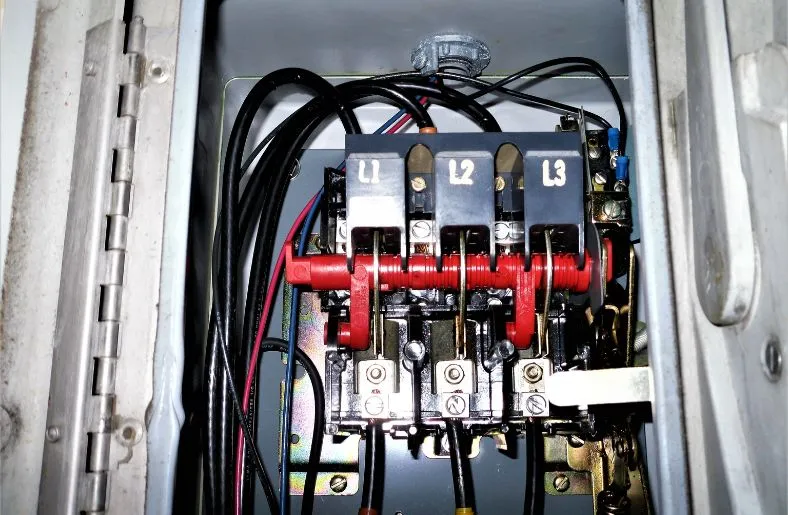The world of home maintenance and DIY projects is filled with tips and tricks that have been passed down through generations. One such tip that often surfaces in discussions is the use of WD-40, a popular lubricant, on electrical switches. But is it safe? Can you use WD-40 on electrical switches without risking damage or causing potential hazards?
In this article, we will delve deep into the topic to provide a comprehensive answer.
Table of Contents
WD-40
Before diving into the topic that “Can you use WD-40 on electrical switches?” it’s essential to understand what WD-40 is and how it works.
WD-40 is a multi-purpose lubricant and penetrating oil that has been around since the 1950s. Its name stands for “Water Displacement, 40th formula,” which indicates that it was the 40th attempt to create the perfect formula. The product is designed to displace water, prevent corrosion, and lubricate mechanisms.
Over the years, WD-40 has gained popularity for its versatility and has been used for various applications, from loosening rusted parts to protecting tools from corrosion.
The Concern with Electrical Switches
Electrical switches are crucial components in any electrical system. They control the flow of electricity, allowing us to turn devices on and off. Given their importance, it’s understandable why there might be concerns about using WD-40 on them.
The primary concern is the potential for WD-40 to cause damage or interfere with the switch’s functionality. Electrical switches operate based on precise mechanisms and contact points. Any interference or obstruction can lead to malfunctions, increased wear and tear, or even safety hazards, such as short circuits or electrical fires.
Can you use WD-40 on Electrical Switches?
The short and straightforward answer is: No, you should not use WD-40 on electrical switches.
Here’s why:
- Residue Buildup: WD-40 can leave a residue over time. This residue can attract dust, dirt, and other contaminants, leading to increased friction and potential malfunction of the switch.
- Electrical Conductivity Issues: WD-40 is not designed for electrical applications. If it gets inside the switch, it can interfere with the electrical conductivity, leading to poor contact and potentially dangerous situations.
- Safety Concerns: Introducing any foreign substance to electrical components can pose safety risks. There’s a potential for short circuits, sparks, or electrical fires if WD-40 or its residue comes into contact with live electrical parts.
Related Guide: Expert Guide: How to Clean a Rusty Cast Iron Skillet and Restore its Cooking Power (2023-2024)
Alternatives to WD-40 for Electrical Switches
While WD-40 is not suitable for electrical switches, there are alternative products and methods you can use to maintain and clean them:
- Contact Cleaner: Specifically designed for electrical components, contact cleaners can effectively remove dirt, dust, and oxidation from electrical switches without leaving residues or interfering with conductivity.
- Isopropyl Alcohol: A common household item, isopropyl alcohol can be used to clean electrical contacts. Ensure that the switch is off and disconnect any power source before cleaning.
- Compressed Air: For removing dust and debris from hard-to-reach areas, using compressed air can be effective. Ensure that the air pressure is suitable for the task and always direct the airflow away from your face and eyes.
- Regular Maintenance: Keeping the area around electrical switches clean and free from dust can prevent many issues. Regularly inspecting and cleaning switches can prolong their lifespan and ensure their safe operation.
FAQs
1. Can you use WD-40 on electrical switches?
If you find any deteriorated terminals or electrical connectors, treat them with a spray of WD-40® Specialist® Fast Drying Contact Cleaner. This will eliminate various types of residue and condensation on electronic equipment, including delicate materials.
2. Is WD-40 electrically safe?
Spray it anywhere there is the possibility of a spark at your own risk. WD 40 is electrically non-conductive so it won’t make any difference in terms of getting a shock if you spray it in a live socket.
3. Is WD-40 acid or alkaline?
WD-40’s formula is kept under wraps, but we do know it contains petroleum-based oil and several hydrocarbons. This puts it more alkaline than acidic. WD-40 states on its website that its product is acid-free.
Conclusion
Can you use WD-40 on electrical switches? While WD-40 is a versatile product, it is not suitable for use on electrical switches. The potential risks, including residue buildup, conductivity issues, and safety concerns, outweigh any perceived benefits.
When it comes to maintaining and cleaning electrical switches, it’s essential to use products specifically designed for electrical applications and follow best practices to ensure safety and functionality.
Remember, when in doubt, always consult with a professional or refer to the manufacturer’s guidelines for proper maintenance and care of electrical components. Your safety and the integrity of your electrical systems should always be a top priority.

